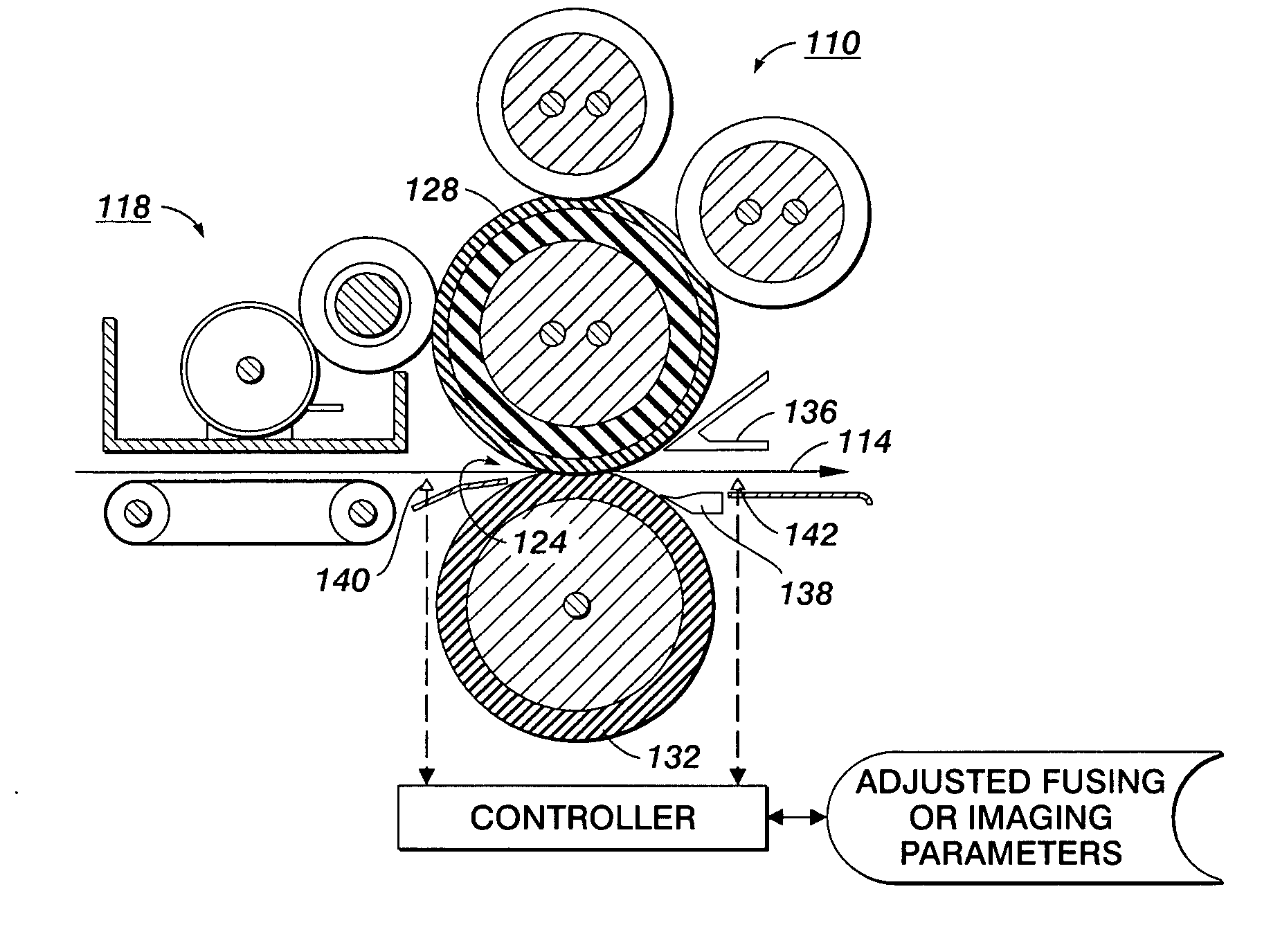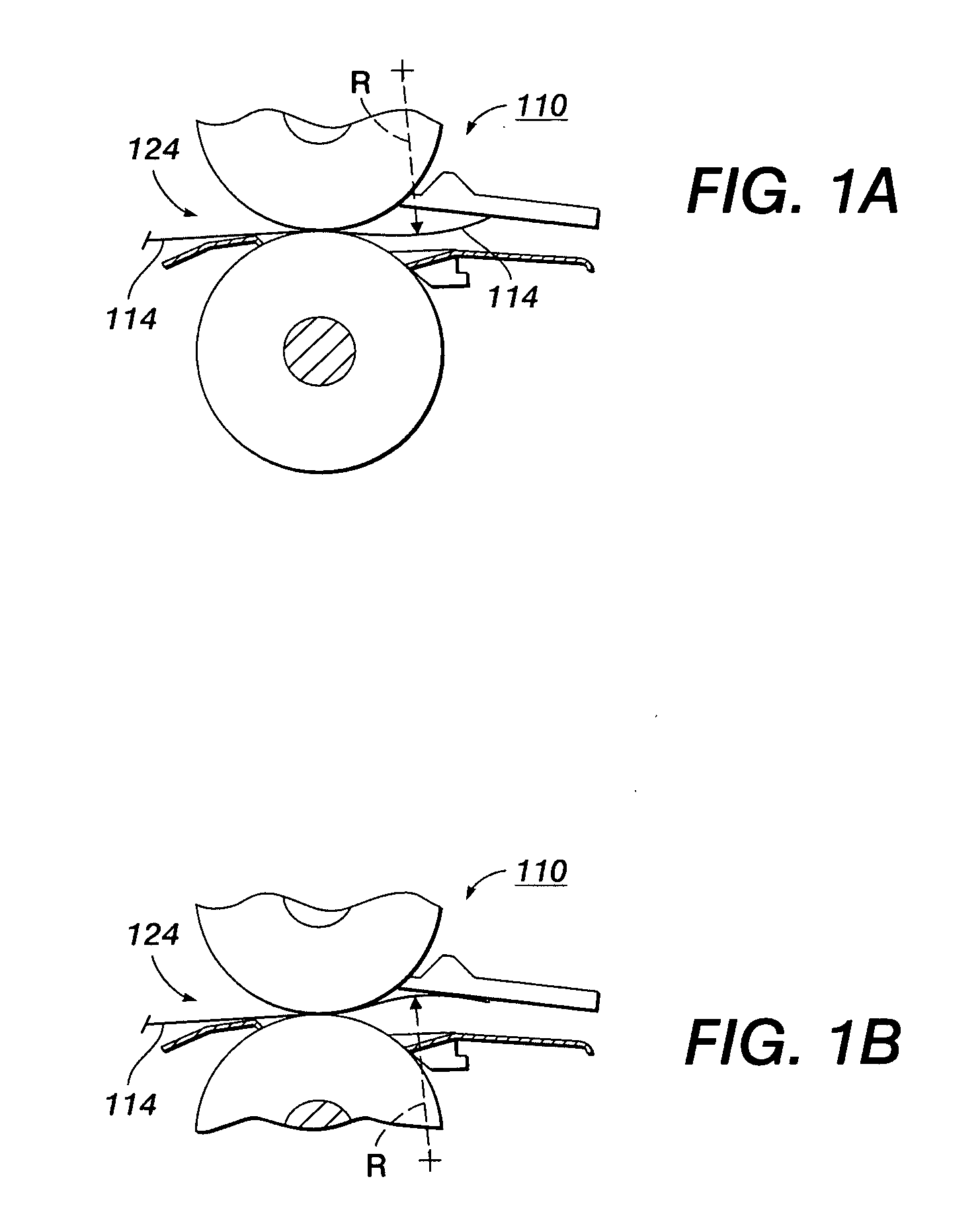System and method for characterizing fuser stripping performance
a technology of fuser and performance, applied in the field of system and method for characterizing fuser stripping performance, can solve the problems of significant fuser stripping failure, machine/roll failure, and lightweight paper stripping from fuser rolls recurring mode of failure in most fusing subsystems, so as to increase the oil rate, reduce the number of failures, and increase the stripping force
- Summary
- Abstract
- Description
- Claims
- Application Information
AI Technical Summary
Benefits of technology
Problems solved by technology
Method used
Image
Examples
Embodiment Construction
[0029] The systems and methods disclosed herein will be described in connection with a preferred embodiment, however, it will be understood that there is no intent to limit the teachings to the embodiment described. On the contrary, the intent is to cover all alternatives, modifications, and equivalents as may be included within the spirit and scope of the appended claims. For a general understanding of the present disclosure, reference is made to the drawings. In the drawings, which are not to scale, like reference numerals have been used throughout to designate identical elements.
[0030] Many measurement and analysis techniques can be performed on data derived from a recorded image sequence, including recording the operation of a non-contacting fuser with various substrate materials under various conditions. One such measurement is a characterization of lead edge height at a known location. This measurement involves scaling a known geometry ratio to the recorded images, setting up...
PUM
 Login to View More
Login to View More Abstract
Description
Claims
Application Information
 Login to View More
Login to View More - R&D
- Intellectual Property
- Life Sciences
- Materials
- Tech Scout
- Unparalleled Data Quality
- Higher Quality Content
- 60% Fewer Hallucinations
Browse by: Latest US Patents, China's latest patents, Technical Efficacy Thesaurus, Application Domain, Technology Topic, Popular Technical Reports.
© 2025 PatSnap. All rights reserved.Legal|Privacy policy|Modern Slavery Act Transparency Statement|Sitemap|About US| Contact US: help@patsnap.com



